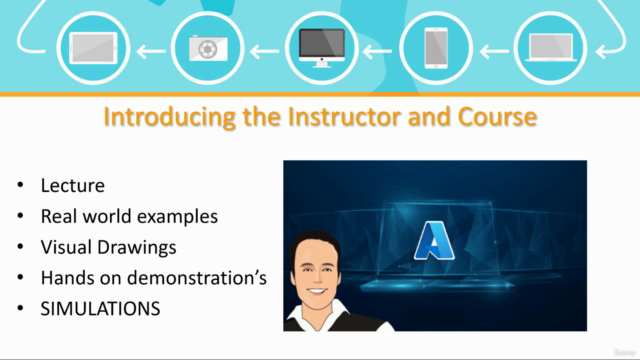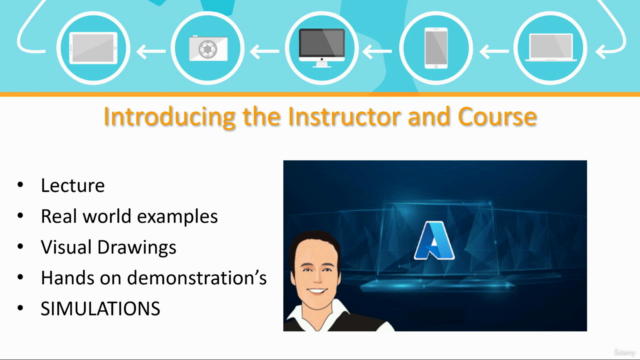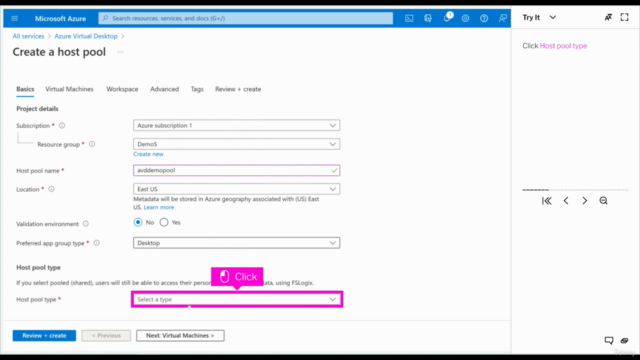AZ-140 Configuring & Operating MS Azure Virtual Desktop AVD
Get prepared for the AZ-140 exam with instructor led labs and hands on simulations available 24/7
4.61 (1128 reviews)

6 173
students
14 hours
content
Apr 2025
last update
$22.99
regular price
Why take this course?
Based on the comprehensive list of tasks and considerations you've outlined, here's a structured approach to implementing and managing an Azure Virtual Desktop (AVD) solution:
Initial Planning Phase
-
Assess Requirements:
- Understand the business and technical requirements for the deployment.
- Determine the scope of the deployment (pilot, phased rollout, full deployment).
-
Design Architecture:
- Define resource groups, subscriptions, and management groups that align with organizational policies and segregation of duties.
- Choose an appropriate OS for AVD based on application compatibility and licensing considerations.
- Plan a host pools architecture that meets performance, scalability, and security requirements.
-
Licensing:
- Recommend a licensing model (per user/per device) that aligns with the organization's needs and budget.
-
Identity Management:
- Decide on an identity management solution (AD DS, Azure AD DS, or Azure AD).
- Plan for integration with Azure AD, including multifactor authentication and Conditional Access policies.
Implementation Phase
-
Set Up Host Pools and Session Hosts:
- Create host pools and session hosts using the Azure portal or through automation (PowerShell, ARM Templates, Bicep).
- Configure settings for host pools and session hosts, including applying licenses to session hosts.
-
Session Host Images:
- Create a golden image either manually or by using Azure VM Image Builder.
- Plan lifecycle management for images, including updates for OS and applications.
- Store the images efficiently, considering cost and accessibility.
-
Security Implementation:
- Use Microsoft Defender for Cloud to monitor security posture.
- Configure antivirus solutions like Microsoft Defender Antivirus on session hosts.
- Set up network security and just-in-time (JIT) administrative access with Azure Bastion.
-
User Experience Configuration:
- Choose and deploy the AVD client suitable for your environment.
- Configure user settings, including printing, device redirection, session timeouts, and Start Virtual Machine on Connect features.
-
Application Deployment:
- Determine the method for app deployment (MSIX app attach, direct installation, etc.).
- Create application groups and publish applications as RemoteApps.
- Assign users to application groups and manage OneDrive, Teams, Apps & Browsers within AVD multisessions.
Post-Implementation Phase
-
Monitoring and Management:
- Set up log collection and analysis for session hosts.
- Configure Azure Monitor for real-time monitoring of AVD services.
- Use Azure Monitor workbooks, Azure Advisor, and implement autoscaling in host pools to optimize performance and cost.
-
Business Continuity Planning:
- Recommend an update strategy for the session hosts agent.
- Plan for Disaster Recovery.
- Design a backup strategy for AVD environment.
-
Maintenance:
- Regularly review and optimize your AVD deployment.
- Implement best practices in terms of performance, security, cost management, and compliance with organizational standards.
Cleanup
- Environment Cleanup:
- Remove any resources that are no longer needed once the deployment is stable and fully operational.
- Documentation: Ensure all documentation is updated and maintained for future reference.
- Cost Optimization: Review and adjust cost configurations to optimize expenses, considering both short-term and long-term perspectives.
- Environment Reconfiguration: If necessary, reconfigure the AVD environment to align with evolving business requirements.
Ongoing Tasks
-
Update Strategy for Session Host Agents:
- Establish a regular schedule for applying updates and patches to session hosts agents.
-
Regular Monitoring and Auditing:
- Continuously monitor the performance, security posture, and cost of your AVD deployment.
-
Continuous Improvement (CCI):
- Regularly review, assess, plan, execute, and monitor the performance and outcomes of your AVD deployment to identify areas for improvement. By following this structured approach, you can ensure a smooth implementation and successful management of Azure Virtual Desktop services.
Course Gallery




Loading charts...
5146456
udemy ID
08/02/2023
course created date
06/04/2023
course indexed date
Bot
course submited by